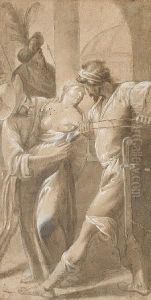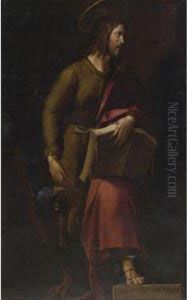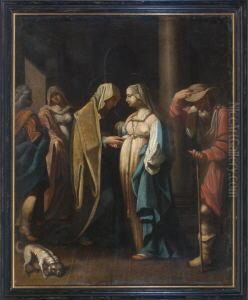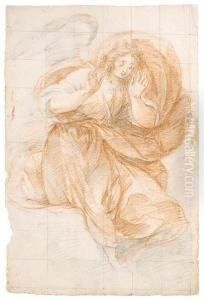Pier Francesco Morazzone Paintings
Pier Francesco Mazzuchelli, also known as Morazzone, was an Italian painter of the late-Renaissance or Mannerism period. He was born around 1573 in Morazzone, from which he adopted his moniker. Morazzone's work is characterized by its dynamic compositions, vibrant color palette, and a certain expressiveness that reflects the transitional nature of art during his time.
Morazzone initially trained in Milan and was influenced by the work of Simone Peterzano, who was also the master of Caravaggio. Despite this early influence, Morazzone's style evolved to be distinct, showing elements of Lombard painting but also drawing on the emerging Baroque sensibility. He was particularly adept at fresco painting, a medium through which he expressed his dramatic flair and command of vivid colors.
One of his most notable works is the series of frescoes he painted for the Sanctuary of the Madonna dei Miracoli in Saronno, which he worked on alongside other prominent artists like Gaudenzio Ferrari and Bernardino Luini. These works helped to establish his reputation as a gifted artist of religious subjects.
Throughout his career, Morazzone worked on various commissions, many of which were for churches, such as his contributions to the Certosa di Pavia and the church of San Vittore in Varese. His work often depicted scenes from the life of Christ and the Virgin Mary, as well as episodes from the lives of saints, imbuing them with a sense of intensity and emotion that was becoming increasingly popular during the Baroque period.
Morazzone's contributions to the art world were significant, as he was among the artists who helped bridge the Mannerist and early Baroque styles. His ability to infuse his works with a sense of movement and his use of dramatic lighting were precursors to the fully developed Baroque style that would dominate Italian art in the 17th century.
Sadly, Morazzone's life was cut short when he died in 1626. Despite his relatively brief career, his influence persisted through his students and the lasting impact of his frescoes and paintings. His work remains a testament to the rich artistic environment of Northern Italy during the transition from Renaissance to Baroque art.


























